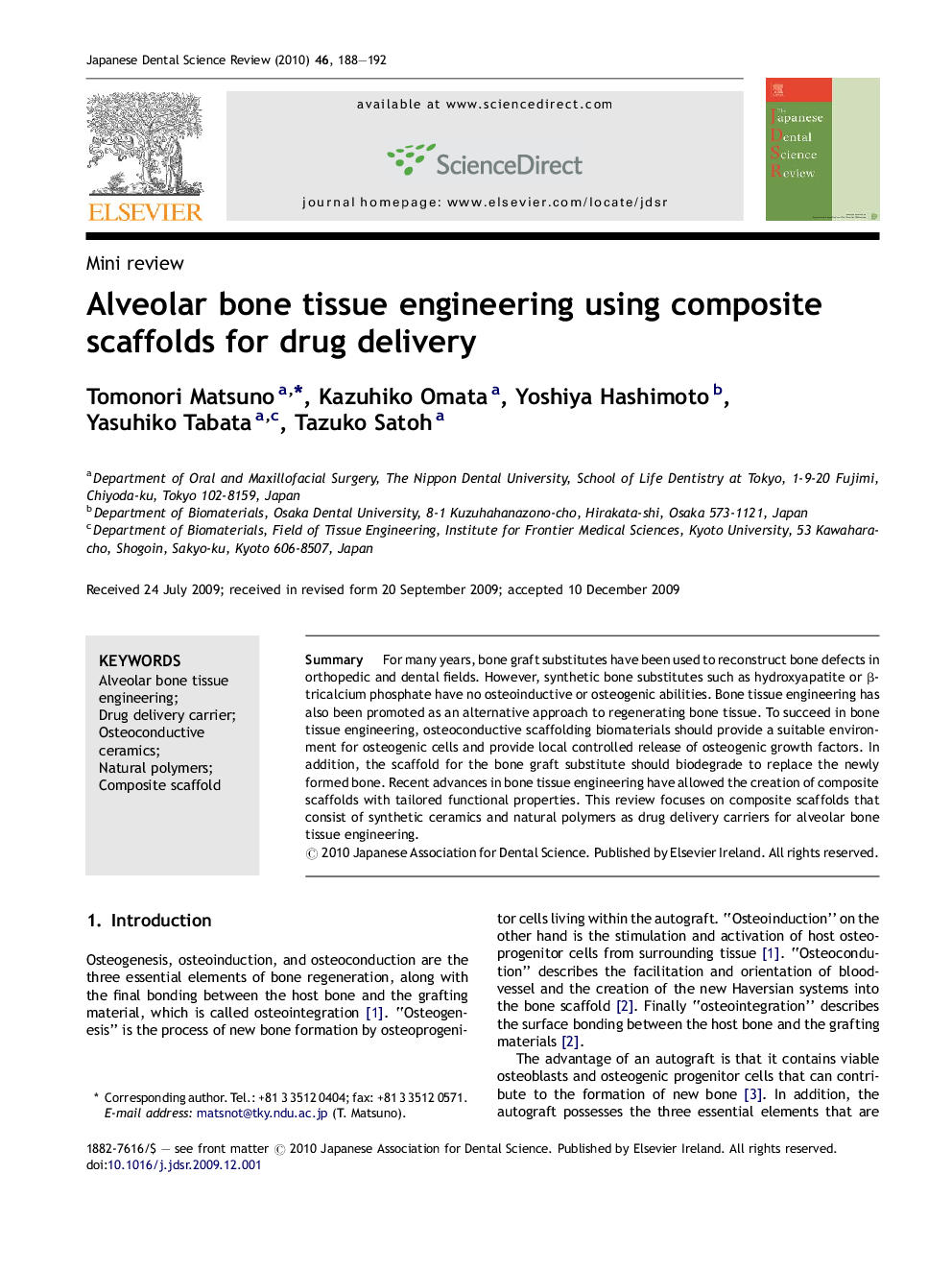| Article ID | Journal | Published Year | Pages | File Type |
|---|---|---|---|---|
| 3136215 | Japanese Dental Science Review | 2010 | 5 Pages |
SummaryFor many years, bone graft substitutes have been used to reconstruct bone defects in orthopedic and dental fields. However, synthetic bone substitutes such as hydroxyapatite or β-tricalcium phosphate have no osteoinductive or osteogenic abilities. Bone tissue engineering has also been promoted as an alternative approach to regenerating bone tissue. To succeed in bone tissue engineering, osteoconductive scaffolding biomaterials should provide a suitable environment for osteogenic cells and provide local controlled release of osteogenic growth factors. In addition, the scaffold for the bone graft substitute should biodegrade to replace the newly formed bone. Recent advances in bone tissue engineering have allowed the creation of composite scaffolds with tailored functional properties. This review focuses on composite scaffolds that consist of synthetic ceramics and natural polymers as drug delivery carriers for alveolar bone tissue engineering.
